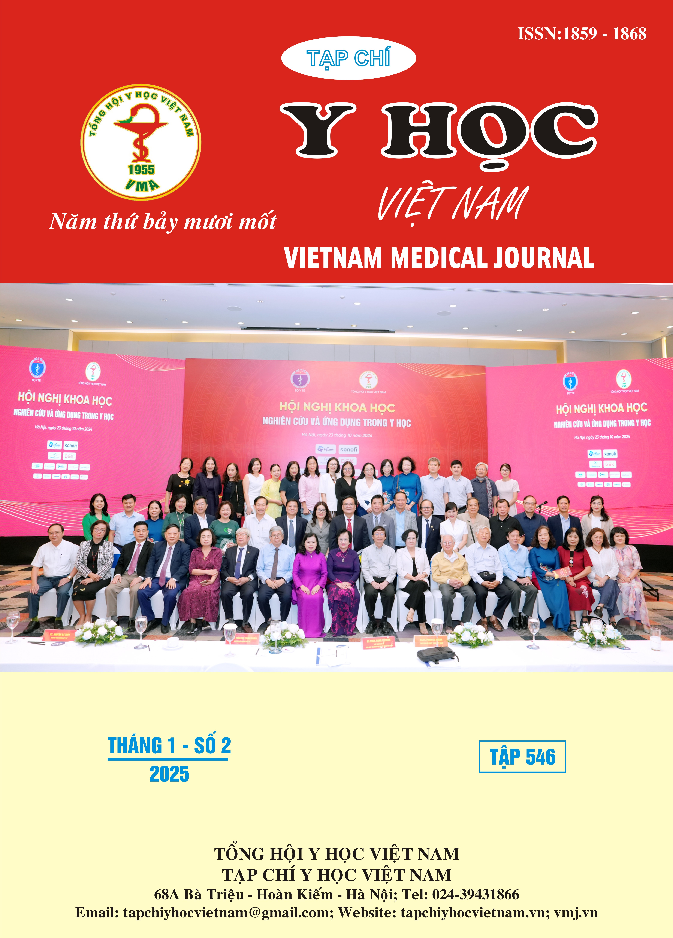XÁC NHẬN GIÁ TRỊ SỬ DỤNG CỦA HỆ THỐNG ĐỊNH DANH VÀ KHÁNG SINH ĐỒ TỰ ĐỘNG TRONG XÉT NGHIỆM VI KHUẨN TẠI BỆNH VIỆN NGUYỄN TRI PHƯƠNG
Nội dung chính của bài viết
Tóm tắt
kháng sinh đồ tự động đã được áp dụng nhằm cải thiện hiệu suất và chất lượng xét nghiệm vi sinh cấy, từ đó giúp nâng cao hiệu quả điều trị và tránh nguy cơ kháng thuốc. Trước khi ứng dụng vào thực hành xét nghiệm thường quy tại cơ sở y tế, hệ thống tự động này cần được xác nhận giá trị sử dụng theo qui định. Mục tiêu: Xác định độ tương đồng, độ tái lặp của hệ thống định danh vi khuẩn và kháng sinh đồ tự động Sentitire Aris HIQ (hãng Thermo Fisher Scientific, Mỹ) theo hướng dẫn của Viện Tiêu chuẩn Lâm sàng và Xét nghiệm (CLSI M52-ED1). Đối tượng và phương pháp nghiên cứu: Nghiên cứu mô tả cắt ngang thực hiện trên các chủng vi khuẩn lâm sàng và các chủng chuẩn (ATCC) lưu trữ ở nhiệt độ âm 80℃ tại Đơn vị Vi Sinh Bệnh viện Nguyễn Tri Phương từ 15/07/2024 đến 25/08/2024. Đối với kỹ thuật định danh vi khuẩn, xác định độ tương đồng và độ tái lặp giữa phương pháp định danh thủ công trên kit sinh hóa thủ công đang áp dụng tại bệnh viện và hệ thống tự động. Đối với kỹ thuật kháng sinh đồ, xác định độ tương đồng bởi các thông số đồng thuận loại (Category agreement - CA), lỗi nghiêm trọng (Very major error - VME), lỗi lớn (Major error - ME) và độ tái lặp giữa phương pháp khuếch tán trên đĩa truyền thống đang áp dụng với hệ thống tự động. Kết quả: Đối với phương pháp định danh, độ tương đồng và độ tái lặp của hệ thống định danh tự động Sentitire Aris HIQ đạt đều đạt 100% với cả các vi khuẩn Gram âm và Gram dương. Trong đó, hệ thống Sentitire Aris HIQ cho phép định danh chính xác tên loài trong nhóm Staphylococcus coagulase negative. Đối với phương pháp kháng sinh đồ, kết quả độ tương đồng từng loại kháng sinh đều đạt trong các chỉ tiêu đánh giá. Trong đó, các thông số về độ tương đồng của vi khuẩn Gram âm cao hơn các vi khuẩn Gram dương. Với vi khuẩn Gram dương thì đồng thuận loại đạt 97,8% (404/413), không ghi nhận VME, 0,7% ME (3/413) và 1.5% mE (6/413). Với vi khuẩn Gram âm thì đồng thuận loại đạt 98,5% (605/614), không ghi nhận VME, có 0,5% ME (3/614), 1% mE (6/614). Độ lặp lại các kháng sinh cho các chủng thử nghiệm đều đạt 100%. Kết luận: Hệ thống Sensititre Aris HIQ hoạt động hiệu quả, đáp ứng các yêu cầu về định danh và kháng sinh đồ các chủng vi khuẩn thường gặp, cũng như đủ điều kiện để áp dụng vào thực hành xét nghiệm vi sinh lâm sàng ở bệnh viện.
Chi tiết bài viết
Từ khóa
định danh tự động, kháng sinh đồ tự động, giá trị sử dụng
Tài liệu tham khảo
2. Bộ Y tế., Quyết định số 2429/QĐ-BYT ngày 12 tháng 06 năm 2017 của Bộ trưởng Bộ Y tế về việc ban hành tiêu chí đánh giá mức chất lượng phòng xét nghiệm y học.
3. Clinical & Laboratory Standards Institute M100, Performance Standards for Antimicrobial Susceptibility Testing - 34th Edition. 2024.
4. Clinical & Laboratory Standards Institute M52-ED1, Verification of Commercial Microbial Identification and Antimicrobial Susceptibility Testing Systems, 1st Edition. 2015.
5. Chapin, K.C. and M.C. Musgnug, Validation of the automated reading and incubation system with Sensititre plates for antimicrobial susceptibility testing. Journal of clinical microbiology, 2003. 41(5): p. 1951-1956.
6. Chapin, K.C. and M.C. Musgnug, Evaluation of Sensititre automated reading and incubation system for automated reading of Sensititre broth microdilution susceptibility plates. Journal of clinical microbiology, 2004. 42(2): p. 909-911.
7. Tan YE, Ng LS, Tan TY. Evaluation of Enterococcus faecalis clinical isolates with 'penicillin-resistant, ampicillin-susceptible' phenotype as reported by Vitek-2 Compact system. Pathology. 2014 Oct;46(6):544-50. doi: 10.1097/PAT.0000000000000146. PMID: 25158809.
8. Al-Rawahi, G.N., et al., Performance of the BD Phoenix Automated Microbiology System for Trimethoprim-Sulfamethoxazole Susceptibility Testing of Staphylococcus aureus. Journal of Clinical Microbiology, 2019. 58(1): p. 10.1128/jcm.00994-19.


